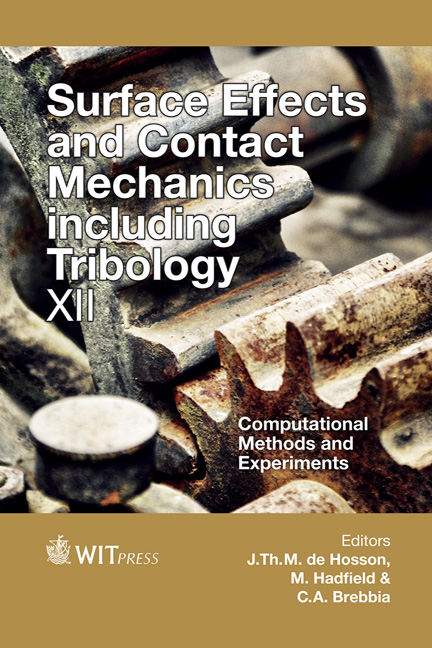Modeling Of Heat And Mass Transfer In An SiC CVD Reactor As A Tool To Design Modern Materials For High Power Electronics Applications
Price
Free (open access)
Transaction
Volume
91
Pages
7
Page Range
213 - 219
Published
2015
Size
729 kb
Paper DOI
10.2495/SECM150191
Copyright
WIT Press
Author(s)
T. Wejrzanowski, J. Skibinski, A. K. Lewandowska, K. J. Kurzydlowski
Abstract
Silicon carbide (SiC) is a wide bandgap material with the potential for high-power and high-temperature electronics. Nowadays, the most efficient manufacturing process is Chemical Vapor Deposition (CVD) at a temperature of about 1900K. The performance of SiC devices is limited by the material quality of SiC substrates and their epitaxial structures, which depend highly on the processing conditions.
In the present study, the quantitative relationship between heat and mass transfer in the hot wall CVD reactor and the epitaxial growth of SiC is addressed. Epitaxial growth means crystal growth that progresses while inheriting the laminar structure and the orientation of substrate crystals. From a technological point of view, it is important to cover the wafer with a thin film of homogeneous thickness. Since there are many parameters that influence a reaction on the crystal area, such as temperature, pressure, gas flow, reactor geometry, it is difficult to design the optimal process.
According to the fact that it is impossible to experimentally determine the exact distribution of heat and mass transfer inside the reactor during the crystal growth, modeling is the only solution to understanding the process precisely. Numerical simulations allow us to understand the process by calculation of heat and mass transfer distribution during the epitaxial growth of SiC. The reactor walls are induction heated during the growth process. Gases are introduced to the reactor at room temperature and are heated during the flow inside the reactor chamber. The main heating mechanism inside the reactor is convection. Additionally, the plate on which SiC is grown is rotating during the process, which affects the mass distribution.
Keywords
Finite Volume Method, epitaxial growth, chemical vapor deposition, silicon carbide





